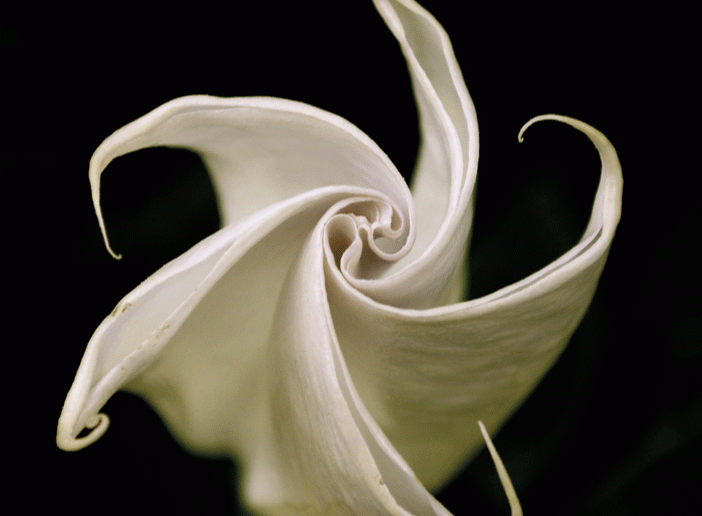Flowers have the power to cure or kill.
Jason Hack, MD, an associate professor of emergency medicine and medical toxicologist, has been taking pictures of medicinal and poisonous plants for years. His photos, which are on display in the Alpert Medical School building this spring, remind us that the “sterile white pills we take often originated as fragrant flowers and delicate plants growing in warm soil.”
This flower (above), Datura stramonium, or jimsonweed, contains atropine, hyoscyamine, hyoscine, and scopolamine: belladonna alkaloids that block peripheral and central muscarinic receptors from binding acetylcholine. This blockade results in an anticholinergic toxidrome. The mnemonic for this syndrome—“blind as a bat [big pupils], mad as a hatter [altered mental status, hallucinations, delirium], red as a beet [flushed skin], hot as a hare [fever], dry as a bone [dry mouth], full as a flask [full bladder but can’t urinate], silent as a mouse [no bowel movements]”—helps doctors remember its symptoms.
Belladonna alkaloids were once used to make women’s pupils large and beautiful (bella). These chemicals can speed up dangerously slow heart rates, slow bowel functions, and dry mucus in the lungs to help people breathe better. Overdose can cause very high fever, heart arrhythmias, seizures, and death.




